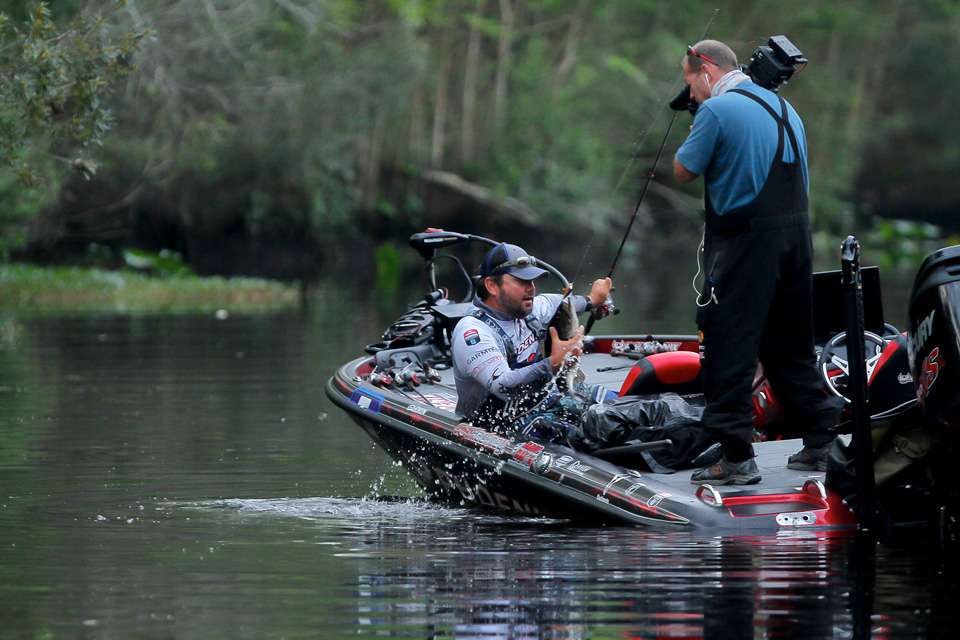
Last time we talked about the things I look for when I’m trying to find bass that are all over the place in their transition — prespawn, spawn, postspawn. This time let’s look at some things that affect the spawn, things that’ll hopefully help you shorten your search.
Before we get into the details, however, it’s important to think about the big picture. Anything that creates unstable conditions or messes with the water will affect the spawn, and in most all cases that means delaying it. Keep that in mind, always, no matter if it’s mentioned here or not.
One of the things that’s obvious right now is the weather. In my neighborhood (Louisiana) the bass are all done. They’re off the beds but they haven’t moved. I was out earlier this week — caught about 35 — but I didn’t see a one that hadn’t already spawned. The funny thing was, though, that I caught them in the same general areas where I caught them in February when they were in their prespawn stage.
They hadn’t moved in weeks, and that’s what I think is probably happening in the Midwest. The rolling cold fronts and snow storms that have held the water back temperature wise have probably kept the bass in the same places for weeks. That’s good news for a shallow water guy like me.
Another thing that’ll hold them back is muddy water. I’m not a fisheries biologist, and I’ve never played one on TV, but it seems like light penetration has a lot to do with that. If bass care about light — and I believe they do — then they have to move shallower to get the same amount of it in muddy water as they can in clear water. That slows them down.
You’ll see the same thing when water drops and pulls back. The bass can’t get shallow without the danger of running out of water as it drops — I think they can sense whether the water’s moving up or down — and so they move off the bank and wait. This delays the spawn for a while.
High water, on the other hand, does something more like extending the spawn. I’m not sure why that is other than maybe they have more choices and so they take more time to find the perfect spot rather than one that will just do for now.
Something else to pay attention to is whether the spring comes fast or slow. A slow warming spring will extend the spawn just like high water. The fish will move up in waves as things fall into place for each individual bass. It’s likely to create several weeks of good fishing.
On the other hand, if the spring comes all at once, the bass will move up all at once. This can create memorable days that are almost unbelievable. You can catch them every few casts on almost anything in your tacklebox, and do it from daylight to dark. But, that action will only last for a few days. The fish move in all at once and they move out the same way.
Finding bass during the prespawn, to spawn, to postspawn transition isn’t all that difficult if you pay attention to what has happened and what will happen. Regardless of what I’ve said here, though, keep one basic thing in mind. The bass will spawn no matter the weather or the water conditions. They can’t hold out forever.
Next time we’ll talk about how to find the perfect flipping and pitching stick, perfect for you.

